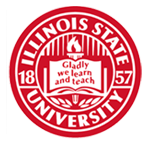Abstract
This study evaluated graduate SLP students’ ability to communicate complex health information, highlighting strengths and areas for improvement. A cross-sectional analysis of 28 first-semester graduate students enrolled in a voice disorders course examined the quality of patient education materials they created based on fictional scenarios. Quality and credibility were assessed using the DISCERN instrument, suitability with the Suitability Assessment of Materials, and understandability/actionability with the Patient Education Materials Assessment Tool for Printable materials. Readability was analyzed using five formulas: Flesch-Kincaid Grade Level, Gunning Fog Index, FORCAST, New Dale-Chall, and Simple Measure of Gobbledygook. DISCERN scores ranged from 17 to 31 (M = 23.35, SD = 3.77), indicating moderate quality and credibility. Suitability scores ranged from 5 to 24 (M = 17.25, SD = 4.16), with most pamphlets rated as "Adequate" or "Not Suitable." Only 7% of PEMs passed the understandability domain, and none passed actionability. Readability consistently exceeded the recommended 5th–6th grade level, with a median above 11th grade. Strengths included visual organization, but gaps in clarity, credibility, and readability were evident. Results underscore the need for targeted training in health literacy and plain language to enhance the accessibility and effectiveness of patient education materials.
Recommended Citation
Slavych, B. K.,
Williams, G.,
Siemers, L.,
Jones, L. E.,
&
Mantie-Kozlowski, A.
(2025).
Quality, Suitability, Understandability, Actionability, and Readability of Patient Education Materials: Baseline Findings from SLP Graduate Students.
Teaching and Learning in Communication Sciences & Disorders, 9(2).
DOI: https://doi.org/10.61403/2689-6443.1383
Included in
Communication Sciences and Disorders Commons, Curriculum and Instruction Commons, Health Communication Commons, Scholarship of Teaching and Learning Commons




